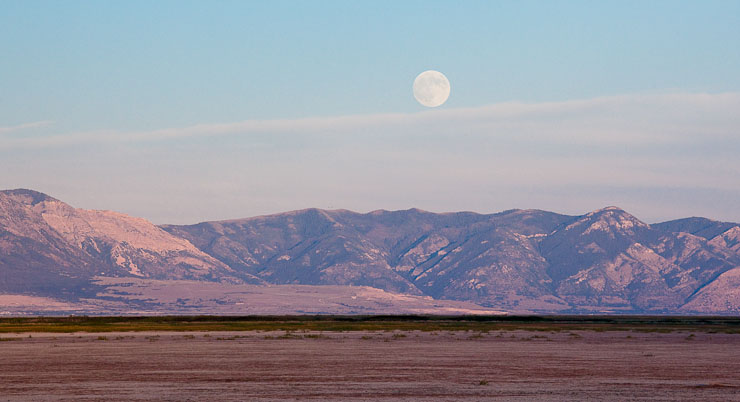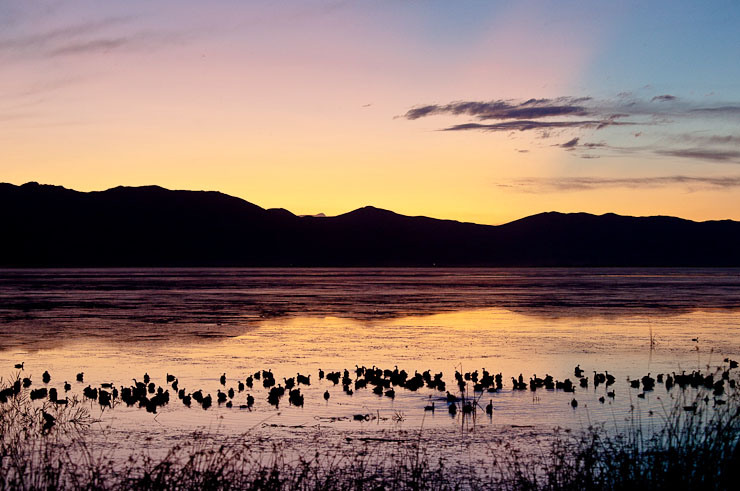
Back at the end of July, I flew out to Salt Lake City, Utah to join my girlfriend on a car-camping trip along the Mirror Lake Scenic Byway that runs through the High Uinta Wilderness Area in the Wasatch-Cache National Forest. At the end of the trip, we stayed two nights in Brigham City, the gateway to the Bear River Migratory Bird Refuge. In many ways, Bear River is the “Bosque” of Utah.
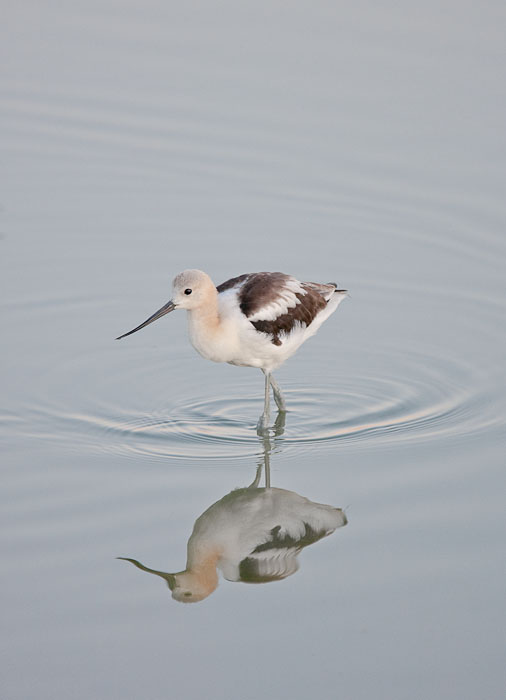
I had only two days there, and the weather on the second day was somewhat uncooperative due to some storm systems that were moving through (the high winds were still blowing the next day for our flight out of Salt Lake, which made for a turbulent take-off!), but would say that the opportunities for great bird photography are there. Artie Morris took a trip out there in 2006, so my observation comes as little surprise. When I return, which will probably be in 2011 as the refuge is planning an extensive road paving project into the middle of next year, I would definitely try to time my visit for May or September.
The real treat for me at Bear River is the great numbers of American Avocets. Unfortunately, by the time I found an ideal pond on the side of the refuge road where the sun angle was perfect, the quality of the light was great, and the birds were close, it was also getting dark. Many of my pictures were made at ISO 800 on the 1D IIN, which is what I consider the limit for acceptable noise for wildlife photography (on that camera).
An aside: I made photos with the 5D Mark II at ISO 2500 and 3200 that I would have no shame in printing large as the noise is so low, but the IIN has real issues beyond 800. For photojournalism and sports, I don’t mind going to 1600, but 3200 is absolutely horrible. The 1D III is a different story, but so is its autofocus!
One thing that I truly enjoyed about Bear River in early August is that it felt like I had the refuge to myself. I passed very few other cars, but strangely saw only one other photographer. Amazingly, the opportunities for photography are not limited to birds and wildlife. The landscape of the refuge is stunning: the mountains in the background are reflected very clearly in the “units” of the refuge that have been flooded, essentially creating a large lake, and some of the wetland grasses and sedges make interesting, layered patterns.
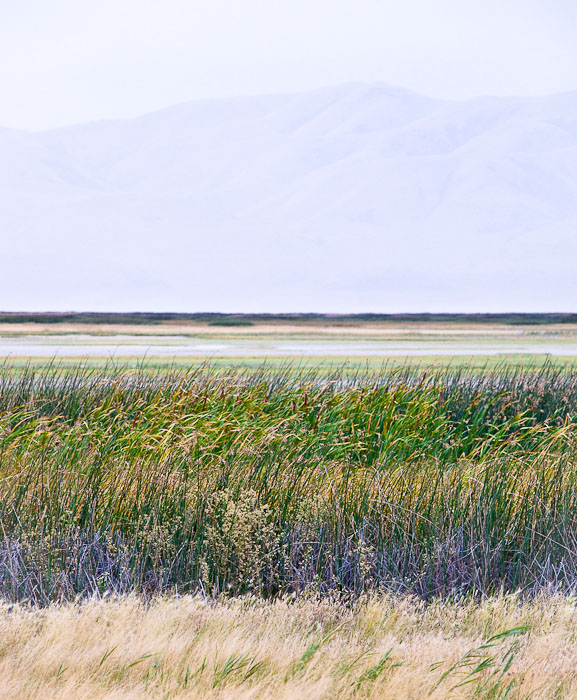
More of this post after the jump!
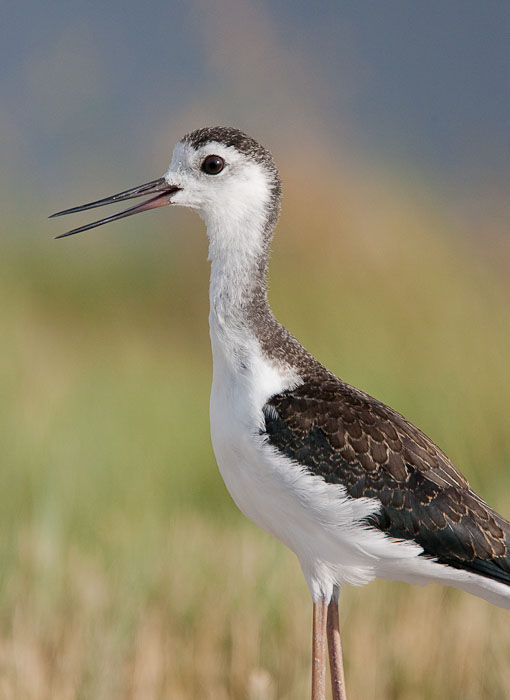
On the last day, I was fortunate to find several Black-necked Stilts that seemed to be more than happy to pose for photographs–provided I stay inside the rental car (using it as a giant, mobile blind) with the driver’s side window rolled all the way down. I pretty much drove like we asked our drivers to do in Kenya: creep up a few feet, and turn the engine off. The birds would move, so fire the engine back up and move up and to the right another foot, then shut it back off.
I was using my Walt Anderson panning ground pod on the window sill. If I were to go back and approach the refuge as my primary destination, I would also bring a bean bag to give the ground pod a more substantial platform. The ground pod makes panning, and also turning the lens in the tripod collar, a very simple operation, and makes for sharper pictures.
Here, I wish that the sun angle on this young stilt was better (I wanted to go ahead of him and look back, but he would have none of it!), but I love the head angle and the catch light in the eye, as well as the behavior with the open bill.
I would say that if you are interested in migratory shorebirds, Bear River is a place you owe it to yourself to add to your list of places to go.
